Jenova – The Calamity from the Skies
Jenova is quite literally a creature right out of a horror film. She’s an appearance-stealing extraterrestrial being who crashed into the planet, is later discovered buried in an eons-old stratum in the frozen north pole, and upon being discovered – immediately infiltrates and destroys a small community of individuals with its terrifying capabilities, and our characters learn about this from watching taped recordings of research. This is a description of Jenova and also The Thing.
Whether or not we get to see what Jenova was like in her prime is anyone’s guess. It would be interesting to see what she was like back during the days of the Cetra when she first came about. I see that as a mix between the Cronenberg body horror of The Thing, and the sort of ethereal and unstoppable transforming fear-based forms of Pennywise from IT.
Luckily for us, by the time we encounter Jenova, she’s been contained by Shinra. Unluckily, she’s been the subject of and inspiration to a number of Hojo’s absolutely wretched mad science experiments. The Compilation focused on this part of Jenova quite a bit, and between Advent Children and Crisis Core, we’ve already seen much more modern interpretations of Jenova in her Nibelheim reactor tank form. Given that they all hold very close to the original, it’s more than likely that this is going to be close to what we’ll be seeing from her in the Remake.

What’s interesting is that even though this is the version of Jenova that we’re all most familiar with, there are a number of minor details noted in the concept art that aren’t fully apparent even in exceptionally high definition because of the point of view that we always see her from.
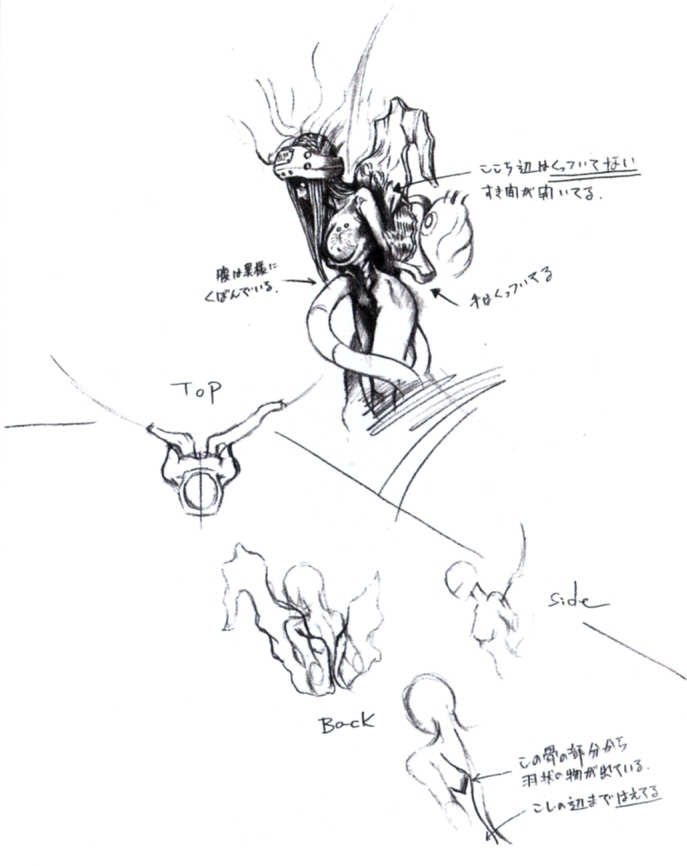
Thanks again to hito for the translations on these concept art notes:
Aside from the head attachment and exposed brain, Jenova is firmly restrained even within her tank.
ここち辺は==くっついてない==すき間が開いてる
This area is ==not tied together== The gaps are open.
手はくっついてる
Hands are tied together.
This gives a much better sense that she’s has been meticulously restrained, and is also likely mutilated on her extremities and not just her brain was experimented on. The other notes provide more information about her physical features from angles we normally don’t see them at as well as the wing-like growths on her back.
腹は異様にくぼんでいる
Stomach is bizarrely sunken.
この骨の部分から羽状の物が出ている。こしの辺まではえてる
Feather-like things sprouting from these bone parts. Grows up to the hip area.
This provides further evidence that she looks to’ve been vivisected, with only necessary organs contained in the tank. It also shows intentional correlation between Jenova’s two wing-like growths on her back and the designs of Sephiroth’s singular right and Genesis’ singular left wings.
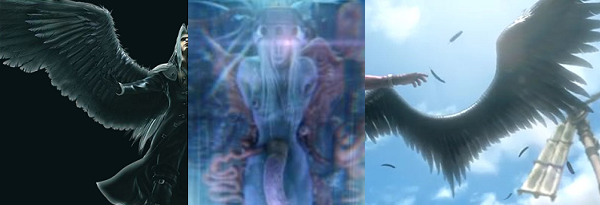
In the second piece of concept artwork, we can see the spot where her stomach is unnaturally sunken connects to one of the massive arterial tubes that joins her to the vital heart-like organ below her that’s usually obscured, but can also be seen on the back of the Jenova∙SYNTHESIS in-game model.
The only notes on this one describe her pale skin and the murky liquid that she’s held in. However, when looking at the comparison between this art and the in-game Jenova Synthesis model, it’s immediately apparent that the tank-contained Jenova is missing a significant amount of her natural form’s biomass. Whether we get better looks at her like this during flashbacks is anyone’s guess, but it’s probable that we’ll have a much better sense of her appearance in this small, preserved specimen-like form, since it helps to inform her later, more fully formed stages.
Where Jenova’s huge amounts of new biomass are acquired is unclear. It might be obtained from the things she slaughters and absorb after leaving Shinra HQ and/or they might be from chunks of Jenova’s matter that Hojo had sitting around in his lab. However, how she formed this massive body is one of the things that would be very interesting to discover with more clarification in the Remake, in addition to what exactly it looks like when she sheds the outer Sephiroth form and assumes her real form. The first two encounters make it seems as though Sephiroth escapes and throws down a chunk of something that turns into Jenova to keep the party from attacking him. This will be interesting to witness how much of that is covered by illusion and how much is transformation. Additionally, as Jenova∙DEATH the ruse with the Sephiroth avatar is completely tossed aside with a normal boss transition, but in the Remake, it’s likely that we will actually watch Sephiroth’s body stretch, distort, and transform into this eldritch, Lovecraftian, undying evil, like Pennywise from Stephen King’s IT.
These more massive boss fight-specific forms are where some more excellent Final Fantasy VII artwork from Final Fantasy Mobius provides even more interesting inspiration for how the Remake might take things – and if it does how they could be used. One of the most interesting things about these bits of concept art is that it’s clear that Jenova retains the basics of her humanoid form only where she had it in the tank. It’s almost as though those parts from the tank can only transform slightly, and all of her new biomass is only loosely formed until she reaches her Synthesis stage.
Jenova Birth
Jenova Birth has very similar pale skin to what the version in the tank does. As with all of the other of her large boss fight forms, since they’re generated from the decapitated remains of Jenova seen in Hojo’s Lab, she has a female body that mostly ends at the elbows and knees. We see her arms turning into massive wing-like hands, fully formed on the right and a more damaged stump on the left. The back of her body is reaching out with numerous tentacles of varying lengths, and her lower legs just turn into a mass of flesh to support her enormous frame. Lastly, her face is a monstrous construction to replace the one that Sephiroth removed in the Nibelheim reactor, so all of its feminine qualities are gone. The neck stretches out into a strange armored mask writhing with small, short tentacles underneath.
This is where we should get our first real sense of what Jenova is, and that it’s more than just another of Hojo’s experiments, so it needs to take everything we’ve seen so far and give us something even more monstrous. In the Remake, the horror parallels here will be overwhelmingly apparent. The sense of horror that it should convey fighting her on the Cargo Ship in the middle of the ocean is perfect for sheer terror. Much like Cargo Ship Nostromo in Alien or the isolated base in The Thing, being trapped with an extraterrestrial horror in a small, isolated location is a recipe for anxiety and fear. Speaking of the film Alien…
Jenova Life
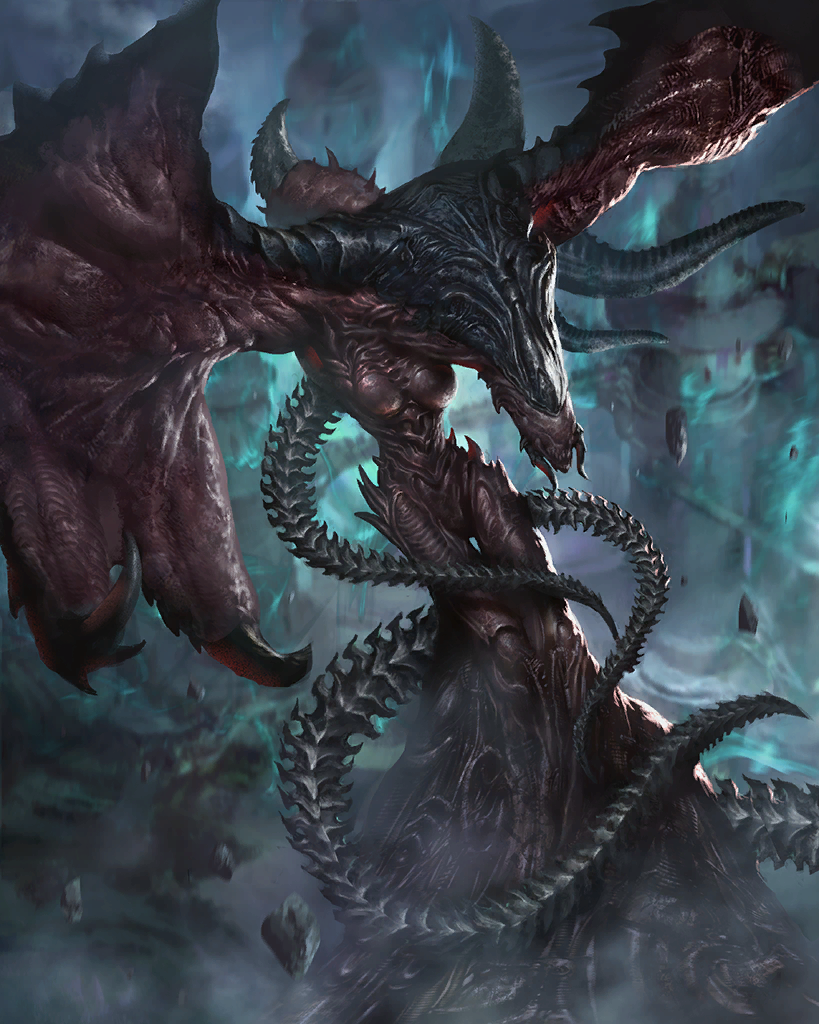
Mobius’ Jenova∙LIFE design is easily my favourite one, as this is when she’s most terrifyingly alien looking. This piece of art draws heavily from the Alien series’ xenomorphs for inspiration. The once soft pale skin is fully covered in a chitinous carapace, her tentacles are sharp and armored, her face lacking any of the humanity it attempted to emulate before, and she’s a pure horrifying monster.
This is the Sephiroth who just pulled the Masamune from Aerith’s body, leaving her dead on the floor, and taunting the helpless Cloud before apparently escaping. It is the form of the ancient monster who’s finally murdered the very last Cetra in their own city, like she started to do thousands of years earlier. It’s the perfect time to play up her inhuman and murderous nature, and this depiction does that absolutely brilliantly. Her ancient and ageless form juxtaposed against the beauty of the city surrounding her, and the inability to tie the rage and hatred to any lingering humanity present in this form, but only to the once-again departed Sephiroth.
If the Remake is going to surpass the original, this is the time where it REALLY has to step up. Aerith’s death is tragic, painful, but adding in the real horrors of Jenova to really accentuate the sadness and feeling of helplessness in the face of the powers of this being, just before IT tells Cloud that he’s nothing but a puppet, should sink in HARD. This is where Jenova should feel like an Alien xenomorph laid an egg in Pennywise from It, who was forcibly melded with the creature from The Thing and the horror that hatched has been gestating in a Lovecraftian chamber of horrors for the last two thousand years. We need to feel that our party is utterly powerless against it, and our moment of resistance left our party with a dead friend and a shattered sense of identity.
Jenova Death
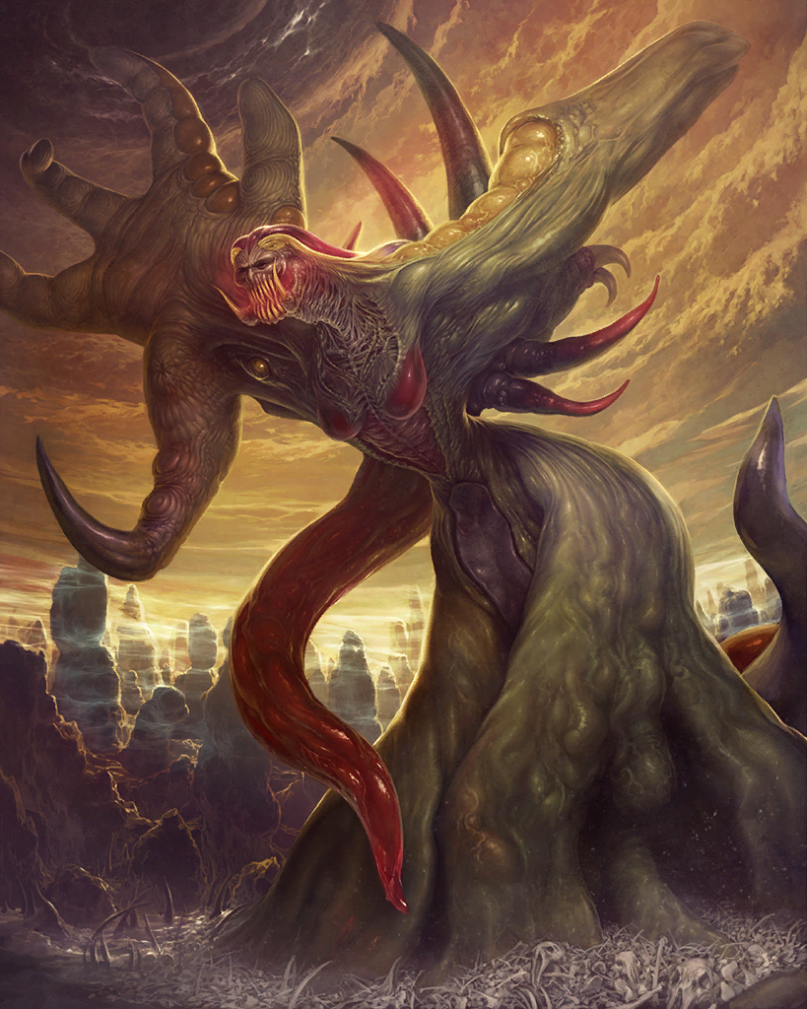
“You’re right. This is the end of this body’s usefulness.” This is where we start to know more about Jenova cells, Reunion, and the bigger picture, and take back the Black Materia. The backdrop of the Whirlwind Maze and Sephiroth’s form murdering the other cloaked & tattooed subjects sets the stage of a familiar slaughter. This form of Jenova is more horrifying, and is where our party learns that the “Sephiroth” that was escaping before was just a ruse. The Mobius artwork shows it as more soft and bloated looking – a significant juxtaposition against the Jenova∙LIFE form. The face is visible again, and more horrifying, the whole body giving off the sense that it’s becoming bloated and is in a state of decay. It’s meant to feel like it’s the end of a cycle, and this depiction of that form exudes that fantastically. This is where the game can draw on previous depictions on undeath and elevate them.
This is the point where the body is all means to an end, and soon enough we’ll have the very cells within Cloud’s body used to have him betray everyone and willingly hand over the Black Materia to the real Sephiroth. This is where we get the sense that Sephiroth has been the one pulling the strings, and that he’s content to cast aside this alien terror as a mere tool. The fear we feel here should be that the Sephiroth we thought we were after wasn’t this thing, and this creature in all its power isn’t even the extent of the horrors that everyone has yet to face. Even death isn’t a deterrent to the plans Sephiroth has.
This is where the previous depictions of undeath in FFVII, especially with the Gi Tribe, will really help to sell Jenova in her Death form. It will need to be distinct from the completely undead, but also draw parallels between them especially in the visuals it uses to depict her. The decay here will help to reinforce the cyclical nature of her being even more thoroughly in the final stage:
Jenova Synthesis
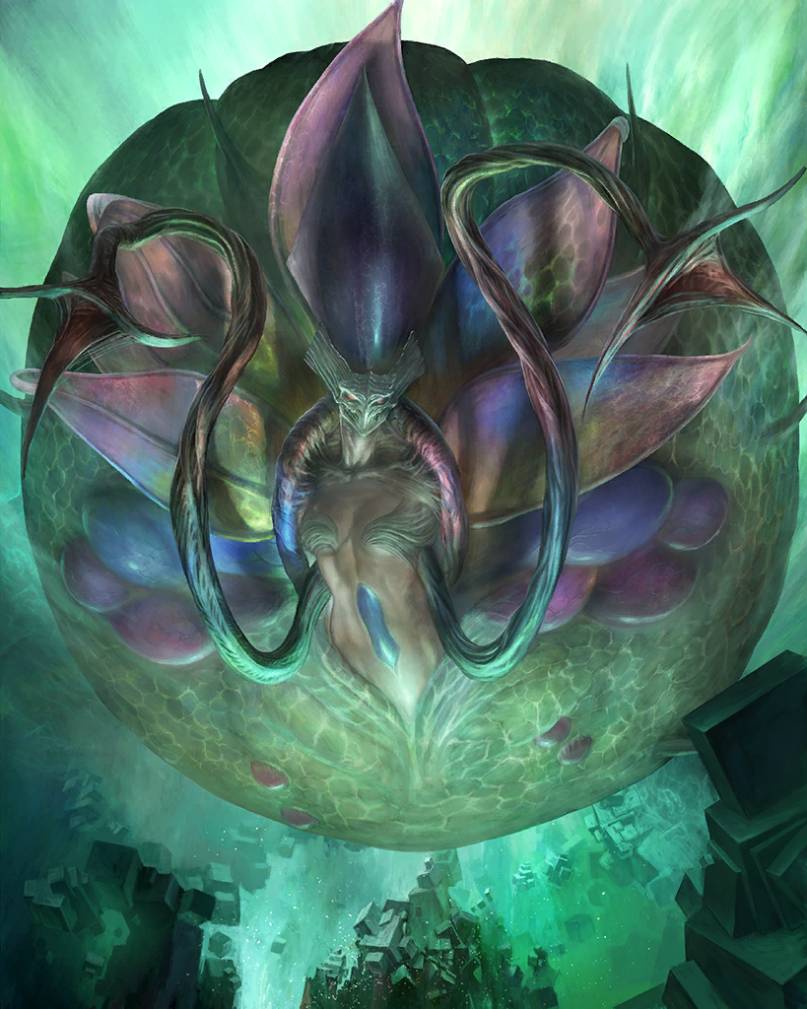
This form is significant for the fact that it is INCREDIBLY different from every other depiction of Jenova thus far, and gives us a sense of what she would have been more like all along, but still retaining key features from the preserved specimen that we saw before. Her humanoid body is fully regenerated, but her wings are almost like massive flower petals now. Her arms, pulled behind her are now the long, grasping tentacles that had half-formed on her before. Her head is completely alien, bearing practically no resemblance to the one she had before Sephiroth decapitated her, but this time it’s meticulously crafted and not a mass of stretched tendrils.
What’s also interesting about this form is that aside from the features it retained from the specimen tank, it looks nothing like it did before. Her body is spherical, with the back open, exposing her massive, beating heart. This form looks like it’s an organic version of the Meteor that’s summoned by the Black Materia – which also has the back broken and exposed by Cid’s rocket.
This is where we get into the cosmic scale of horror. The death of an entire planet, and moving to another world, just to infiltrate and destroy it. It ties in with the threats looming over our characters’ heads, and everything that they’ve faced to get to this point where it still might not be enough. This is where the game ties in horror and action together into the, “prevent the apocalypse” rally against ultimate evil, which helps to keep the overall feeling of the original Final Fantasy VII intact.
While the game dips quite deep into themes and tones of horror in many forms, the Remake will have ample opportunity to delve far deeper. Horror in Final Fantasy VII is a slow crescendo that pulls along and is always eventually surpassed by the action but most of all by the HEART of the game and story. It’s why the game doesn’t feel like a horror game, even though it dives head first into those territories with seeming reckless abandon. It’s a balance of making those commitments strong but also varied in order to use them to thematically tie everything else in the story together, eventually going all the way back out to the basic cycle of life and death on the Planet. Slowly showing futility, and ending on the fact that it’s the Lifestream itself that has to step in and save things, rather than turn its Weapons against us.
Like Bugenhagen feared, all of their actions were ultimately not enough, but the EFFORTS of those actions are what are recognized by the Planet itself to step in and save the day. What leaves the game feeling like epic fantasy is the sense that our party didn’t manage to overcome an environment-destroying corporation, mad science, and extraterrestrial horrors on their own. Cloud & Co. gave it their all, which was just enough to barely defeat them with the help of the whole Planet… for now. All of those things still retain their power and haunting insurmountability with the players because of how successfully the original utilized elements of horror in so many different, but distinctly memorable and lasting ways. Even as things heal under the watch of Nanaki’s children 500 years later, we know that this is a cycle that doesn’t just end with the death of the bad guys, but that alien genetics and vengeful spirits can persist and constantly return… and that’s something that the Remake will need to convey and amplify on all fronts from start to finish.
Hopefully this gave a good look at how the Remake might be able to deal with many different types of horror that were present in the original. The Remake has a lot of things that it can use to great effect that the original never could, especially involving subtle design, but also in understanding what thematic elements of horror to use, and when to use it elsewhere. Also, thanks for Shademp for helping me go over each of them.
Because of the fact that the last several “The Potential Of:” editorials have focused on the darker and more haunting aspects of what the Remake can draw from the original game, the next one will focus on the techniques needed to give those elements of the game proper weight. If everything is grimdark all the time, you don’t get a sense of range, and that’s one of the things the original really nailed. I hope you’re looking forward to going into how you can mix in the Dark & Epic with the Wacky & Whimsical to get the most out of all of them, without creating a tonal inconsistency with the heightened realism that is being aimed for in the FFVII Remake.

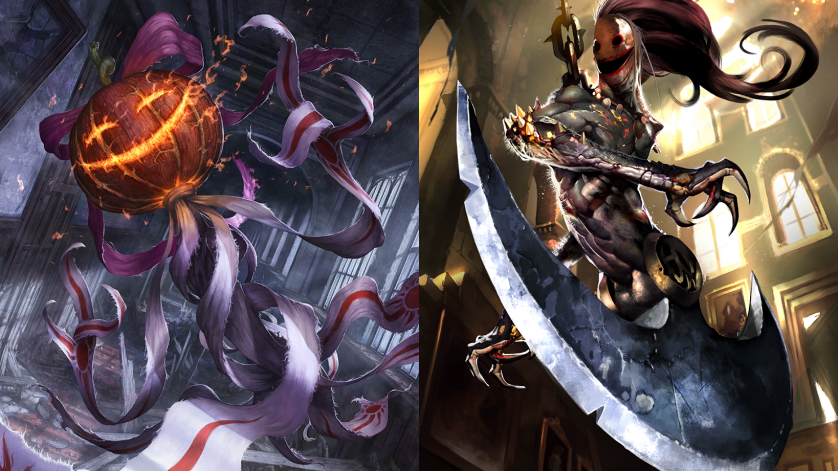
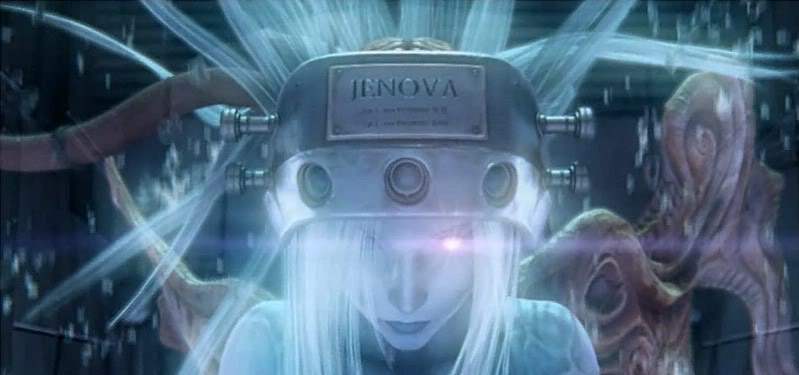
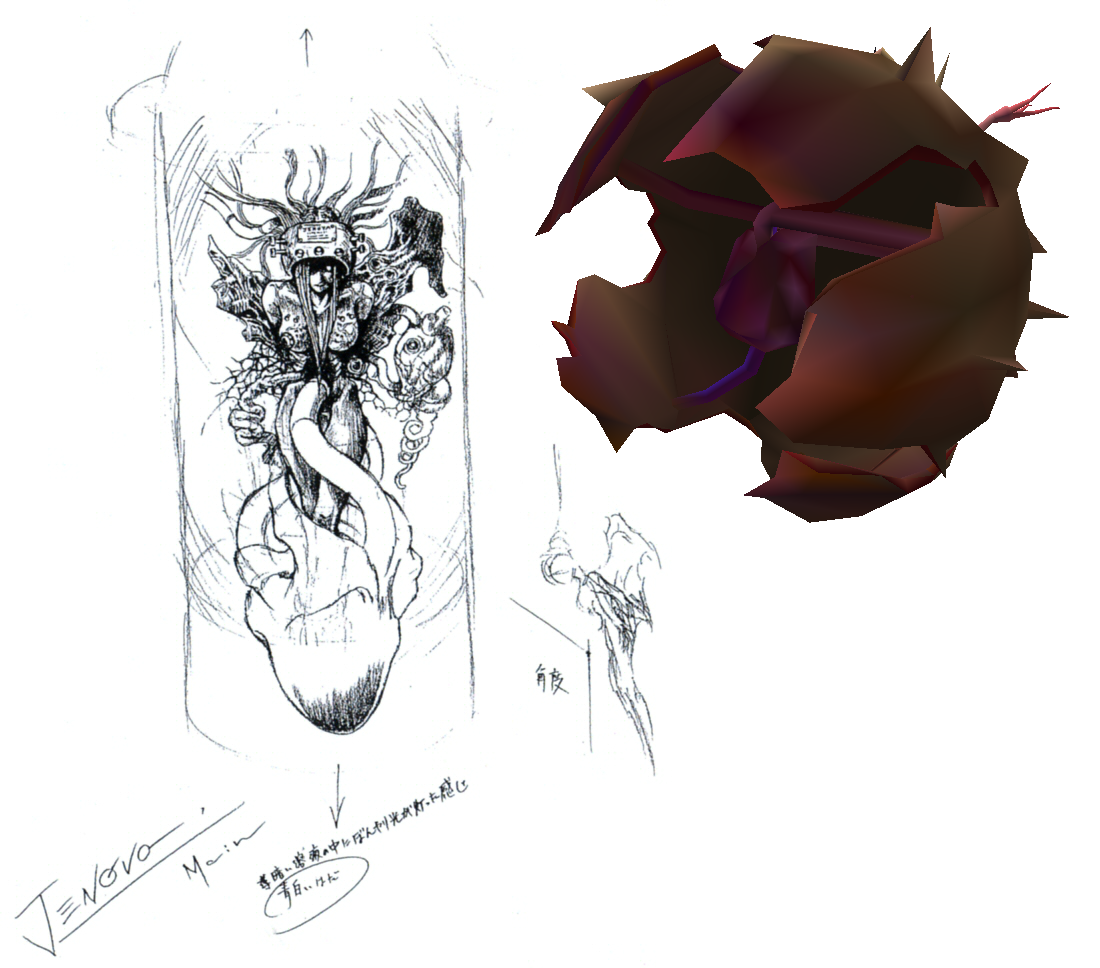
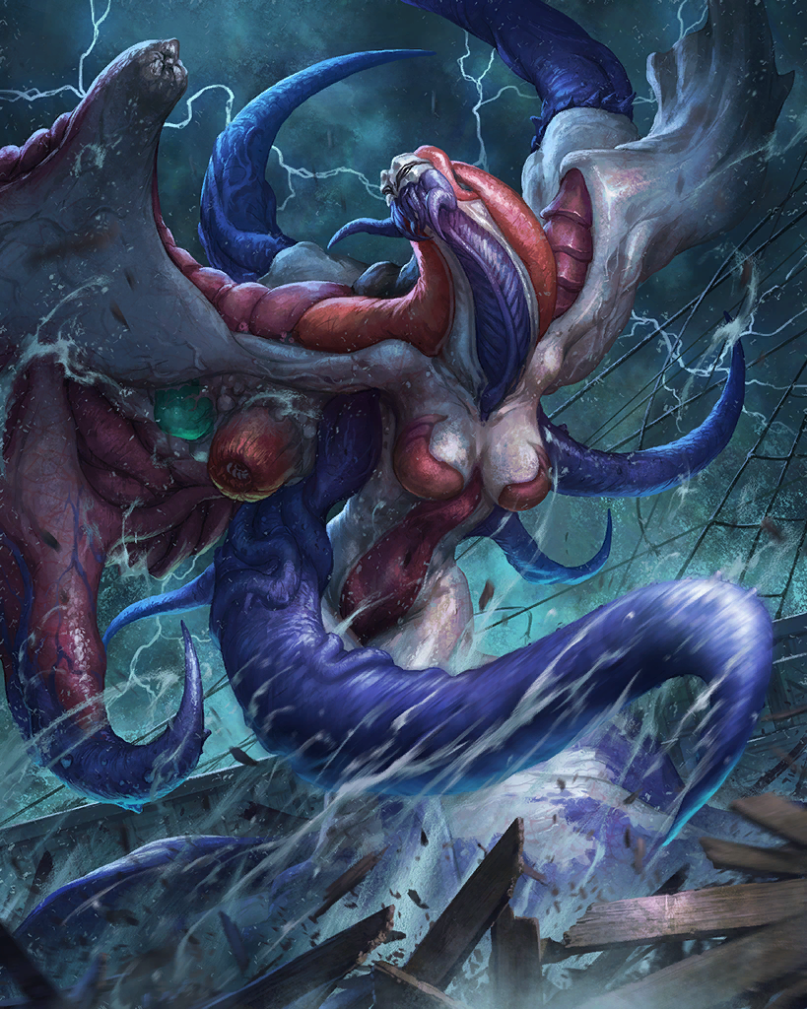
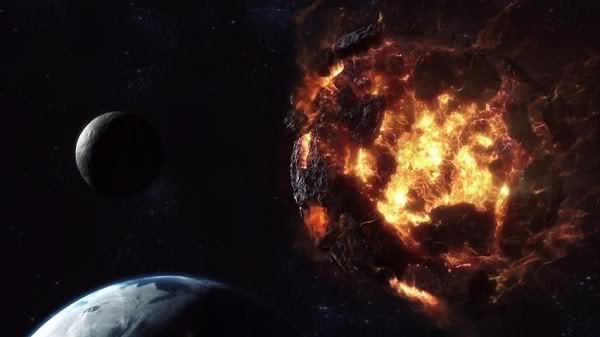
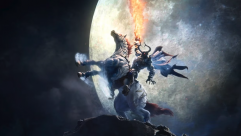
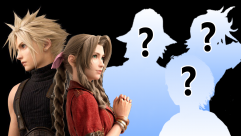
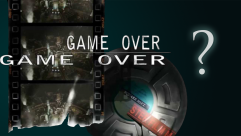

No comments yet
Log in or Register
First of all, thank you for the mention. *Clap* *Clap* *Clap* I’m glad that I was able to collaborate in some way in which these articles can be written. “The Potential Of:” editorials are amazing, the way you describe each detail is excellent.
¡Congratulations!
I’m really glad that you’ve been curating them, they’ve been a massive inspiration for writing these. I’m really glad you’ve been enjoying them!
One of the ads from the original game focused on the horror aspect. It kind of made it seem like a horror game: https://3.bp.blogspot.com/-p4JQTLBeVck/WJTN7b5pHTI/AAAAAAAAAwQ/Afxj_isaB40eaGWMGtB_ChkgbQ51jorlgCLcB/s1600/FFVIIad.jpg